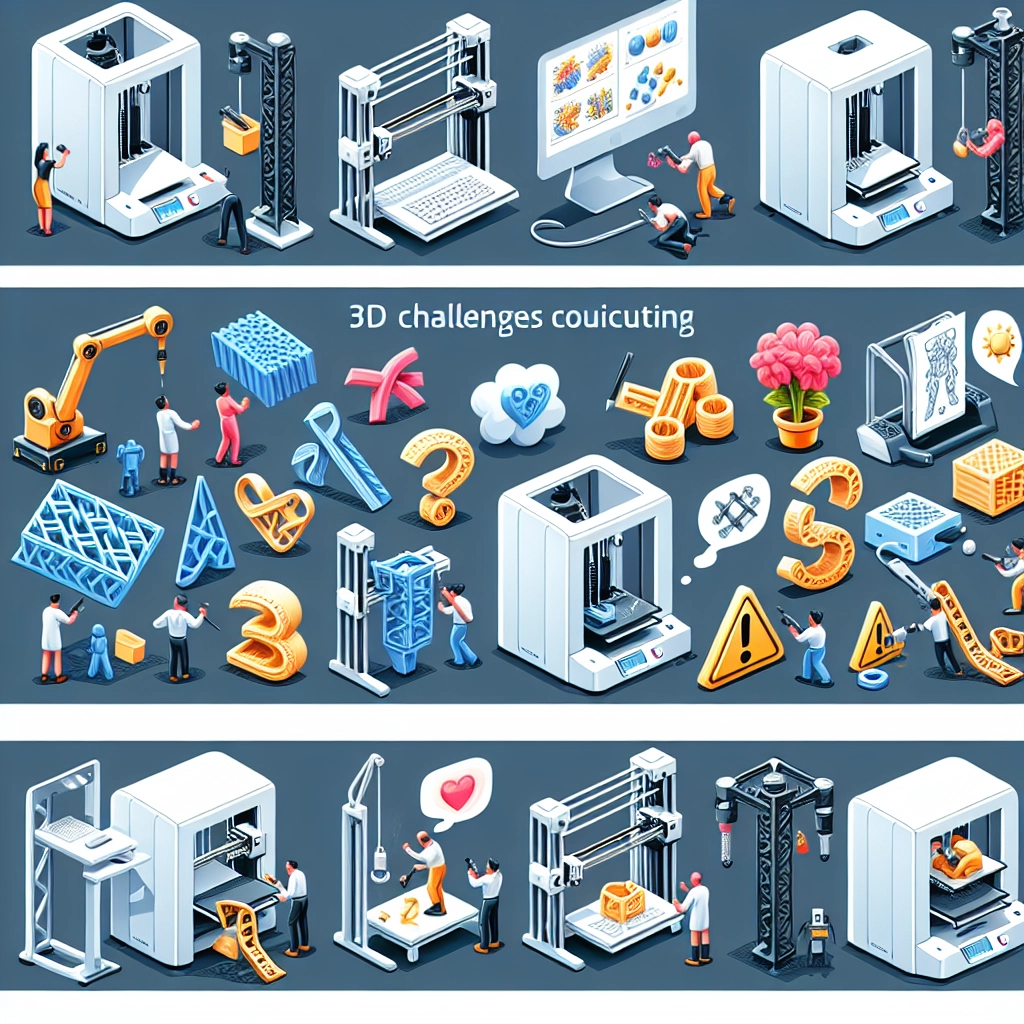Challenges in 3D Printing and How to Overcome Them
3D printing has taken the world by storm, transforming industries from manufacturing to healthcare. It’s an exciting technology that empowers creativity, reduces waste, and lets us create almost anything we can imagine. But it’s not all sunshine and rainbows—there are several challenges that can make 3D printing a bit tricky. Fear not! We’re diving into some of these challenges and how to overcome them.
1. Material Limitations
One of the most significant hurdles in 3D printing is the limited range of materials available. While there are numerous options like plastics, metals, ceramics, and even food, not every material works well with every printer. For instance, certain printers excel with thermoplastics like PLA or ABS, while others can handle high-performance engineering materials like nylon or titanium.
Solution: Research is your best friend! Before diving into a project, make sure to identify the best material for your specific 3D printer and application. Also, keep an eye on the evolving 3D printing materials market. Many companies are innovating to create new composite materials that can better meet your needs.
2. Print Quality Issues
Have you ever marveled at a stunning 3D-printed model only to watch your own print come out looking like a lopsided pancake? Print quality can be unpredictable. Some common issues include layer misalignment, stringing, and warping, all of which can ruin your masterpiece.
Solution: Calibrate your printer regularly. It’s like maintaining a car—keeping it in good condition can prevent many issues. Make sure to check your printer’s bed leveling, nozzle height, and temperature settings. Also, use print settings, like support structures and rafts, to help maintain quality. Learning from trial and error might be part of your journey, but over time, you’ll find out what settings yield the best results for your specific machine and material.
3. Design Limitations
While the beauty of 3D printing is that it can create complex geometries and shapes, not every design will come out as intended. Some designs might be structurally unsound or impossible to print without support. This can be especially challenging for beginners who might not fully understand the nuances of 3D design.
Solution: Use software that can help you with your designs and simulate the printing process. CAD (Computer-Aided Design) programs come with a learning curve, but they often include helpful tools to check for potential issues before printing. Additionally, there are countless online resources available, from YouTube tutorials to forums, where you can get tips and tricks from experienced designers and users.
4. Time and Cost Efficiency
Let’s be real—3D printing can be a time-consuming process. From design to actual printing, it can take several hours or even days to complete a project. This can make it less ideal for rapid prototyping or last-minute orders. Plus, the materials and maintenance costs can add up, especially if you are using high-quality filaments or printing large models.
Solution: Plan ahead! If you’re aware of your timelines, you can allocate enough time for your prints and avoid any unnecessary stress. Experiment with different print speeds and layer heights to find a balance between quality and time. Also, consider producing multiple items in one print job to maximize efficiency and reduce material waste.
5. Safety Concerns
Lastly, let’s not forget safety. Some 3D printing materials release fumes that can be harmful if inhaled. Additionally, operating a 3D printer involves high temperatures, making it imperative to be cautious.
Solution: Always print in a well-ventilated area and consider using an enclosure for your printer if it releases fumes. Invest in a high-quality air filtration system if you’re a frequent printer. Always follow the manufacturer’s guidelines for safety, and don’t hesitate to wear appropriate protective gear when necessary. Remember, safety first!
3D printing is an incredible technology that holds immense potential for innovation and creativity. While challenges abound, with a little patience and practice, they can often be overcome. Embrace the learning curve, and don’t shy away from experimenting with new designs and materials. Each challenge is an opportunity to grow as a maker! By staying informed and connected with the 3D printing community, you’ll be better equipped to tackle whatever limitations may come your way, transforming obstacles into new possibilities on your 3D printing journey.

